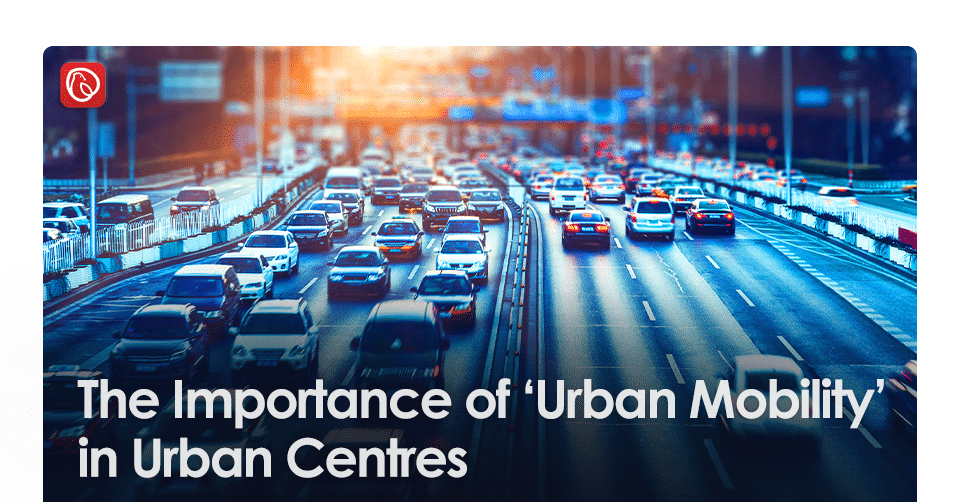By Awais Bhatti
As life unfolds in the urban areas, people – owing to the advancements in telecommunication and transportation – are connected like never before. The mobility of people has reached an extent where vast distances are covered in a fraction of time.
Due to the enhanced connectivity, people in search of opportunities and for earning their bread and butter move from one place to another. Similarly, the movement of freight and commodities is another characteristic of urban centers that is essential for running businesses and providing people with routine supplies.
What is Urban Mobility?
This ‘movement’ is the vigor of cities in formal terms is also known as Urban Mobility; the phrase is gaining momentum in the policy circles and is being widely adopted in the development of new urban centers. However, the question is not only about the movement from one place to another rather, how planned the movement is, and what are the impediments in the way of efficient urban mobility.
The challenge is widespread in developing countries where spontaneous expansion and congestion in the cities have underscored the importance of urban mobility and participation in city life.
In 2015, the transportation sector across the world had a share of 28% in the global energy consumption and it is anticipated that the figure will rise to 70% by the end of 2050. Similarly, according to the estimates of the UN 230 million people will be residing in urban areas by 2030. In the light of these statistics, urban mobility if not given proper attention can defy new economic opportunities with also repercussions on the social standing of people.
Definition
Urban mobility is defined as the movement of people and commodities through efficient means of transportation which is in line with environmentally friendly practices, has a positive impact on city life, and provides universal access to all irrespective of gender. Transport systems across the world play a great role in the economy of a country. Moreover, it also acts as a medium of participation in the social domain of life.
The end goal of urban mobility is to provide equitable access to transportation services, maximize economic productivity, and promote environment-friendly practices. In this direction, governments across the world are taking steps to promote urban mobility in urban areas by developing integrated transport systems, piloting bicycle initiatives for short-distances, and gender-inclusive transport systems.
Urban Mobility and Real Estate
The urban mobility and real estate sector have a direct and inextricable link with each other which can be observed in the form of price fluctuations and accessibility. Moreover, it has been cited by various case studies that urban mobility has a direct influence on real estate prices.
The phenomenon can be simply explained as, greater the accessibility of the people to real estate markets higher the average real estate values. Since the real estate sector with the incorporation of technology is moving in a forwarding direction, effective mobility in urban centers also has a due share for optimizing the potential of real estate markets.
Moreover, by creating new linkages with distant places through effective mobility, new investment opportunities in real estate markets can be explored by incorporating people of the rural areas which can transform the face of the real estate sector through inclusive participation.
It has been observed that effective mobility between the rural and urban areas has given opportunities to the people living in suburbs to access the amenities offered in urban centers. This phenomenon has given a boost to the real estate markets and rural mobility.
Graana.com for the significance and better understanding of the concept brings some prominent examples from the world which are improving the urban mobility around the cities.
Intelligent Transport System (ITS)
States across the world are replacing their existing structure of transport with an Intelligent Transport System (ITS) which is the manifestation of a system governed by the incorporation of technology in their transport system. Data collection is an important component of ITS for better traffic management; the data is collected through digital means which is then translated into travel advisories provided to the users.
Singapore is a unique example in this sense where real-time information of traffic is provided through GPS-enabled taxis and a highly integrated transport system. This has enabled Singapore to deal with the issue of congestion in the cities at rush hours.
Travel Demand Management
This mode of traffic management is yet to become a common practice across the cities; however, this system encourages traveling through public transport in peak hours while simultaneously restricting private vehicles to enter the cities in peak hours. Similarly, for maintaining the traffic flows and avoiding the gridlocks states have opted for an Electronic Road Pricing (ERP) system where the taxes are applied on the vehicles based on congestion level.
‘Congestion Pricing Scheme’ in London encompasses charging a fee on single-occupant vehicles for entering Central London and also a means of encouraging people to use public transport.
Eco-Mobility
Since preservation of the environment is at the core of eco-mobility, transport systems that are environment-friendly and have low carbon emission are replacing the old methods of transportation. In this direction, countries by engaging in public-private partnerships are promoting non-motorized transport systems intending to achieve two goals; the first being the sustainability of the environment, and the second being hassle-free efficient mobility. The characteristics of eco-mobility are eco-driving, low carbon emissions, and environment-friendly vehicles.
For the promotion of eco-mobility, the Norwegian government is shifting most of its public transport vehicles to alternative energy sources, with providing generous incentives to electrical vehicles.
Promoting Non-Motorized Vehicles (NMVs)
The word ‘Non-Motorised Vehicles’ takes back to the 19th century; in contemporary times where the vehicles are powered by engines and sophisticated technology, the utility of non-motorized vehicles cannot be ruled out. Different examples around the world show that states are compelling their citizens to revert to bi-cycles for short distances.
In this context, France has developed the ‘Public Bike Share Programme’ for the promotion of non-motorized vehicles with bicycling as a substitute medium of transport for short distances.
Awais Bhatti is a content specialist at Graana.com.


























